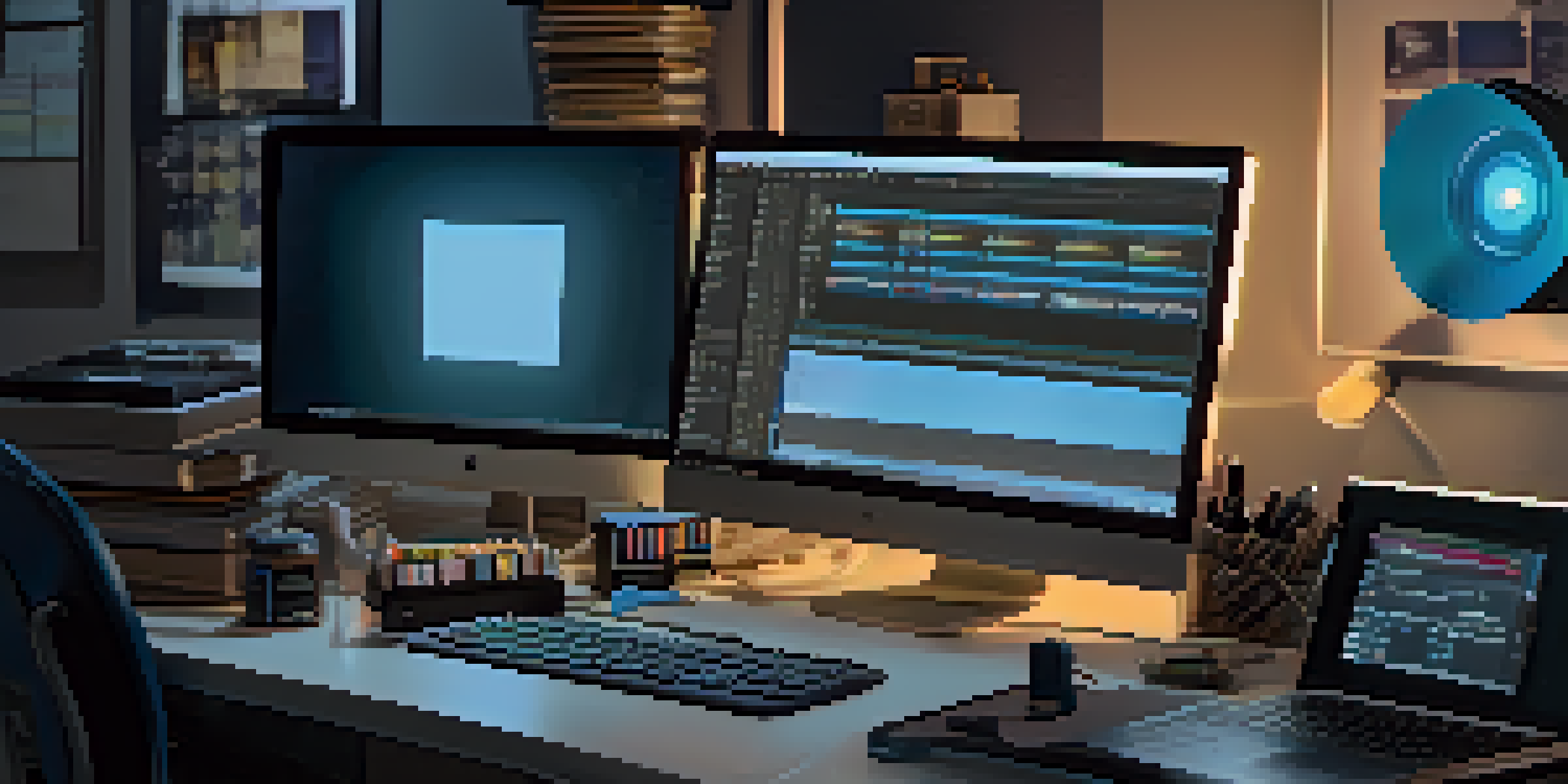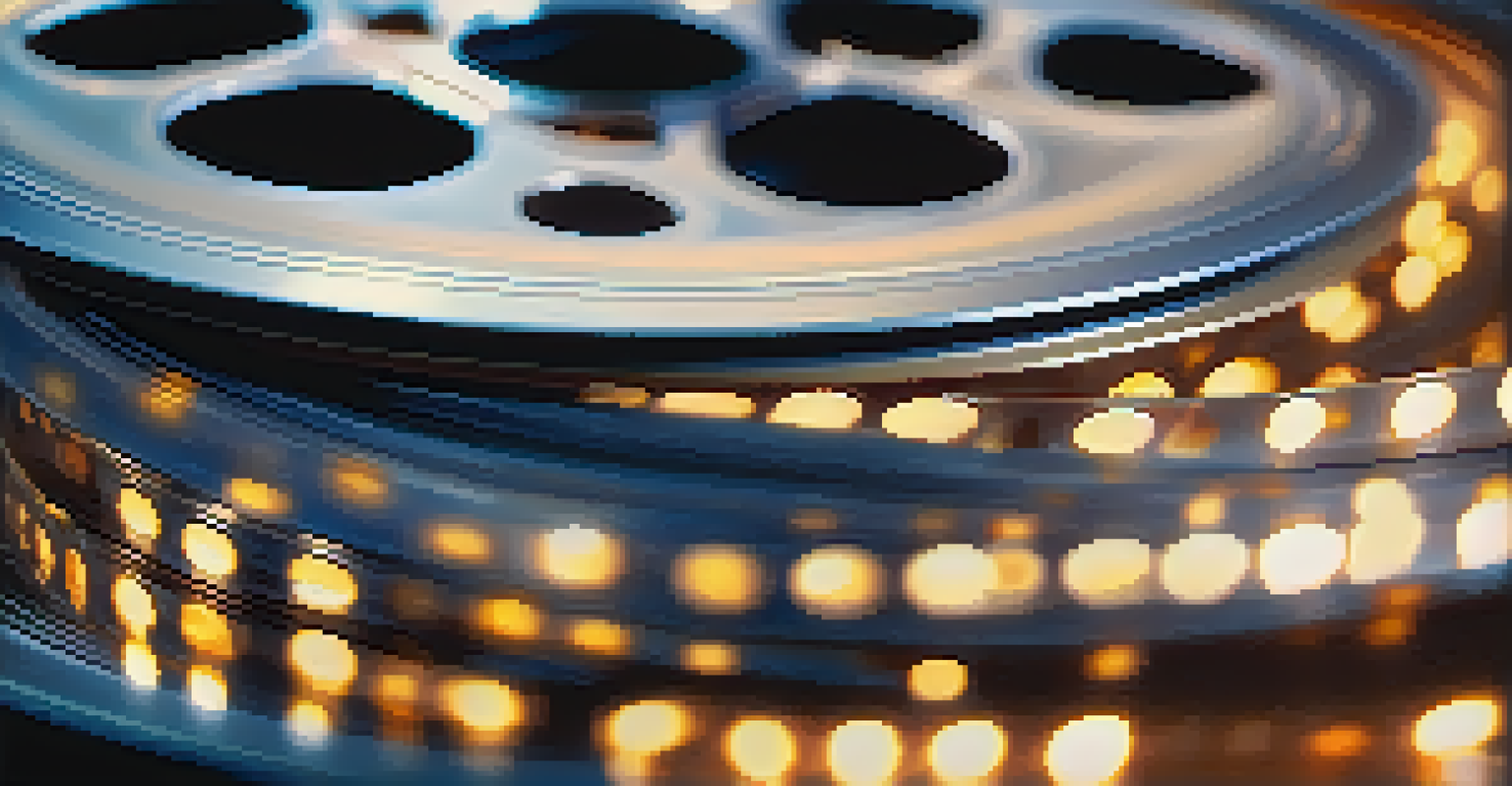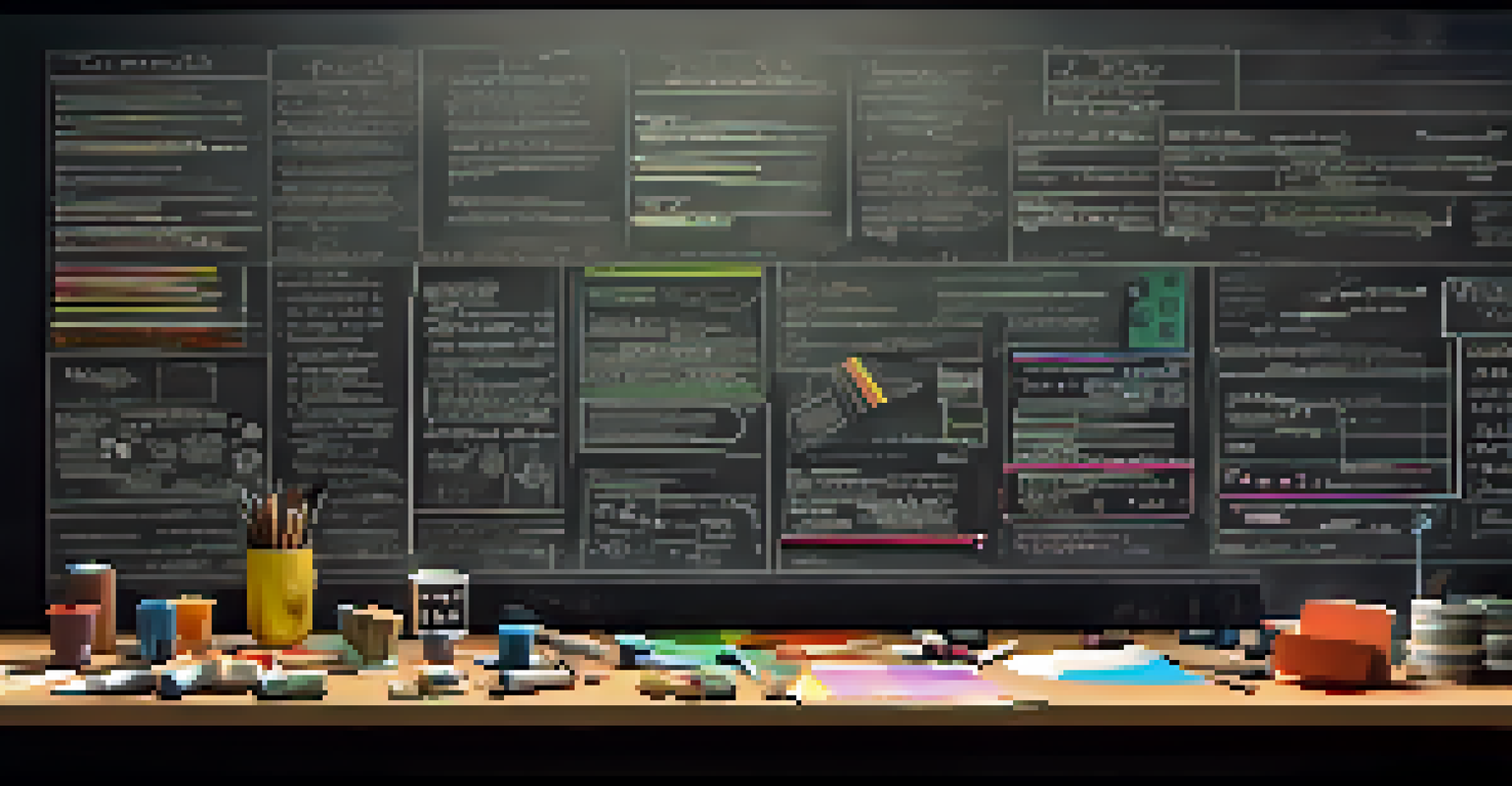Cutting Techniques: Jump Cuts, Match Cuts, and More

What Are Cutting Techniques in Film Editing?
Cutting techniques are essential tools in film editing that help convey a story. They dictate how scenes transition from one to another, influencing the viewer's emotional journey. By utilizing different cuts, filmmakers can create tension, maintain pacing, or enhance storytelling.
Editing is like a puzzle; it’s about putting all the pieces together to create a cohesive story.
In essence, cutting is about making decisions on how to piece together footage in a cohesive manner. Each technique serves a unique purpose, whether it's to maintain continuity or to create a stylistic effect. Understanding these techniques can vastly improve your appreciation of film as an art form.
In this article, we’ll explore various cutting techniques, focusing on popular styles like jump cuts, match cuts, and more. By breaking down each method, we aim to demystify the editing process and show how these cuts shape the narrative.
The Jump Cut: A Bold and Dynamic Choice
Jump cuts are a popular editing technique that creates a jarring but exciting transition between scenes. This cut involves removing sections of time within a single shot, making it appear as though the action jumps forward. It can add a sense of urgency or humor, depending on how it's executed.

One famous example of a jump cut in action is in the film 'Breathless' by Jean-Luc Godard, which uses this technique to keep the audience on their toes. The abrupt shifts can disrupt the flow, but they also engage viewers by forcing them to pay closer attention. This makes jump cuts a daring choice for filmmakers looking to break conventions.
Cutting Techniques Shape Storytelling
Different cutting techniques, such as jump cuts and match cuts, significantly influence the narrative flow and emotional impact of a film.
While jump cuts can be effective, they require careful consideration to avoid confusing the audience. When done right, they can inject energy into scenes, making them memorable and impactful. It's all about striking a balance between creativity and clarity.
Match Cuts: Seamless Transitions That Connect Ideas
Match cuts are an editing technique that creates a visual or thematic continuity between two shots. They often involve matching the action, shapes, or sounds to establish a connection between different scenes. This technique can create a powerful narrative link that enhances storytelling.
The best films are made by editors who know when to keep things simple and when to take a risk.
A classic example of a match cut is in Stanley Kubrick's '2001: A Space Odyssey,' where a bone thrown into the air transforms into a spaceship in orbit. This seamless transition not only captivates the audience but also symbolizes the evolution of humanity. Such cuts can elevate a film's artistic expression and provoke thought.
Using match cuts requires a keen eye for detail and an understanding of visual storytelling. When executed properly, they can evoke strong emotions and deepen the viewer's connection to the narrative. This technique is a testament to the power of editing in shaping how we perceive a story.
Cutting on Action: Keeping the Momentum Flowing
Cutting on action is a technique where the editor cuts from one shot to another while an action is in progress. This technique helps maintain the flow of motion and keeps the audience engaged. By transitioning during a moment of movement, the cut feels more natural and seamless.
For instance, if a character is reaching for a door, cutting to the next shot as their hand touches the doorknob can enhance the scene's continuity. This technique helps to create a sense of urgency and excitement, especially in action sequences. It allows the viewer to stay in the moment without feeling jolted by abrupt changes.
Creative Cuts Enhance Viewer Engagement
Techniques like L cuts and creative cutting allow filmmakers to express their artistic vision while keeping the audience captivated.
Mastering this technique can significantly enhance the pacing of a film. It encourages editors to think creatively about how to maintain energy within scenes. When done effectively, cutting on action can make even the simplest moments feel dynamic.
The L Cut and J Cut: Sound and Image in Sync
The L cut and J cut are techniques that manipulate audio and video to create a more immersive viewing experience. In an L cut, the audio from the next scene starts before the visual transition, while in a J cut, the audio from the current scene continues even after the visual has switched. This technique allows for a more fluid storytelling approach.
For example, if a character is speaking in one scene and the visual cuts to a different setting, using a J cut can maintain the dialogue's presence, guiding the audience's understanding. These cuts can also build anticipation or emotional resonance, creating a more cohesive narrative flow.
By intertwining sound and image, L and J cuts enrich the storytelling experience. They allow filmmakers to convey subtext and emotional depth, enhancing the viewer's engagement. This technique showcases the importance of audio in film, underscoring how sound is just as crucial as visuals.
Cutting for Continuity: Keeping the Story Cohesive
Cutting for continuity is a fundamental principle in film editing that aims to maintain a seamless flow of time and space. This technique ensures that the viewer can follow the story without confusion, creating a logical progression of events. It's all about maintaining consistency in the visuals and the narrative.
For instance, if a character is wearing a blue shirt in one scene, they should still be wearing that shirt in the next shot to avoid jarring the audience. This attention to detail helps create a believable world, allowing viewers to suspend their disbelief and immerse themselves in the story. When continuity cuts are well executed, they can make the film feel more authentic.
Continuity is Key for Cohesion
Cutting for continuity ensures a seamless visual experience that helps the audience follow the story without confusion.
Effective continuity cutting enhances the overall viewing experience and keeps the audience connected to the narrative. It's about creating a sense of realism and cohesiveness, which is essential for any film. This technique is a crucial skill for editors, as it lays the foundation for good storytelling.
Creative Cuts: The Role of Artistic Expression
Creative cuts are techniques that push the boundaries of traditional editing, allowing filmmakers to experiment and express their artistic vision. These cuts can include techniques like cross-cutting, where two scenes are interwoven, or using a montage to convey the passage of time. Such creativity can elevate a film from ordinary to extraordinary.
One iconic example of creative cutting can be found in Quentin Tarantino's films, where non-linear storytelling and unique cuts keep the audience engaged. By playing with time and perspective, filmmakers can create a distinct narrative style that resonates with viewers. This creative approach often leads to memorable cinematic moments.

While creative cuts can be riskier, they also provide opportunities for innovation and originality. Filmmakers can use them to set their work apart and leave a lasting impression. Ultimately, the choice of cuts reflects the filmmaker's unique voice and vision, making the editing process a critical element of storytelling.
Conclusion: The Impact of Cutting Techniques on Filmmaking
In conclusion, cutting techniques are vital in shaping how stories are told in film. From jump cuts that inject energy to match cuts that create thematic connections, each method plays a significant role in the viewer's experience. Understanding these techniques allows us to appreciate the artistry involved in filmmaking.
As we've explored, different cuts serve various purposes, from enhancing continuity to fostering creativity. By mastering these techniques, filmmakers can manipulate time and emotion, guiding the audience through their narrative journey. The choice of cuts can significantly influence how a story unfolds.
Ultimately, cutting is more than just a technical skill; it's an art form that requires both precision and creativity. As audiences, recognizing these techniques enriches our viewing experience, allowing us to engage more deeply with the stories being told on screen.